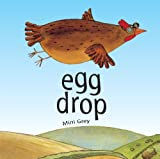- Oct 15, 2012
- 1 min read
I’m back! As some of you may (or may not) know, I recently had a baby girl and am just starting to get back into the swing of things. I thought I’d start things off with a few blog posts that I wrote before the baby came, but didn’t get around to posting.
First up, a post about a picture book my toddler and I read a few months ago:

Ugly Fish by Kara Lareau, Illustrated by Scott Magoon
This is another kooky picture book, this time about a mean and ugly fish. I saw this on the shelf and was immediately drawn to the funny illustration on the cover. My 2.5 year old thought this book is hilarious and so did I. The story is about a big, mean fish who eats up any other fish who have the misfortune of being placed into his tank. In the end, he gets his come-uppance (spoiler alert: he gets swallowed by an even bigger fish!). I wonder if some kids might find this ending troubling, but my 2.5 year old didn’t.
Funny side note: My daughter doesn’t seem to understand what “ugly” means. This has been an issue with other stories that have “ugly” trolls and the like, and for some reason she just hasn’t understood my explanations! I think at this point she thinks ugly is the same thing as mean.
Up next week: Pics from my family trip to Cornwall this past summer!


